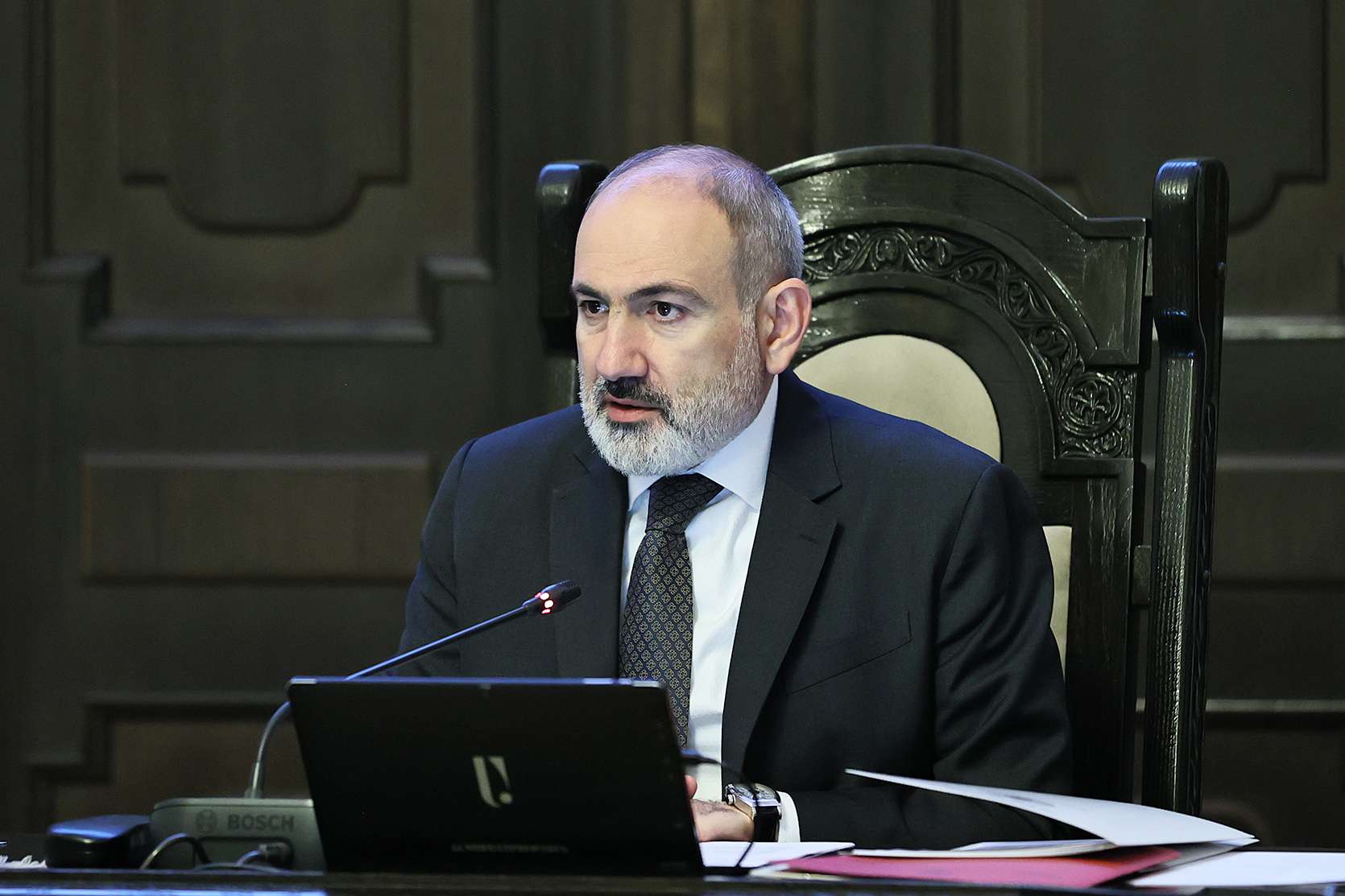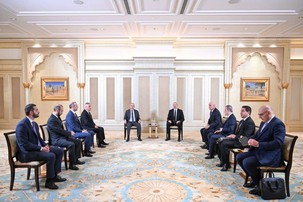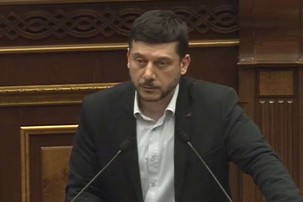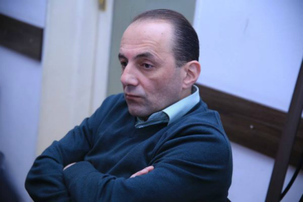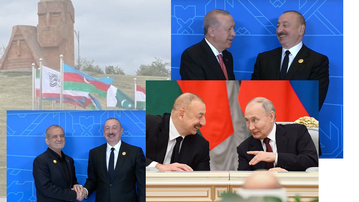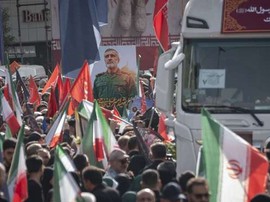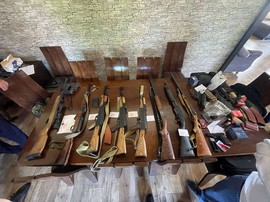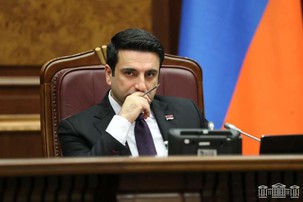Prime Minister Nikol Pashinyan referred to the Armenia-Azerbaijan border demarcation process at the beginning of the government session. In his speech, the Prime Minister, in particular, noted:
"Dear Colleagues,
As you are aware, yesterday, the commissions of the Republic of Armenia and the Republic of Azerbaijan, in compliance with the protocol adopted at the joint session of April 19, agreed on Baghanis of the Republic of Armenia, Baghanis Ayrum of the Republic of Azerbaijan, Voskepar of the Republic of Armenia, Ashagh Askipara of the Republic of Azerbaijan, Kirants of the Republic of Armenia, and Kirants of the Republic of Azerbaijan. The border sections were marked in the villages of Khairemli, Berkaber of the Republic of Armenia, and Kyzyl Hajil of the Republic of Azerbaijan. They signed the descriptions of the protocols of these border sections.
I consider what happened to be a great success. It is a great success for two reasons. First, a fundamental cornerstone has been laid for further developing and strengthening our sovereignty and independence. Second, for the first time since independence, our republic has an officially delimited border, which will significantly increase the level of security and stability in the area of the mentioned villages and along the entire Armenia-Azerbaijan border.
I also want to thank the Government Commission on Border Deregulation and Border Security, headed by Deputy Prime Minister Mher Grigoryan and all its members. I also want to thank all the members of the Security Council of the Republic of Armenia who were involved in this whole process, in fact, on a daily basis. Thank you, all of you present, because I have regularly provided information about what is happening around the delimitation process.
I want to make an additional comment on one or two details. I am sure that yesterday you saw the answers of the Information and Public Relations Department of the Government to the questions of "Armenpress." You noticed that, of course, it is also recorded in the joint statement of the commissions that the demarcation took place with the maps of 1976, a duty process passed in 1979.
You know that it was fundamental for us in the demarcation process between Armenia and Azerbaijan not to create a new border but to reproduce the borders reaffirmed by the Alma-Ata Declaration. In other words, we should not make a border during delimitation. Still, we should reproduce the borders that existed at the time of the collapse of the Soviet Union and have de jure legal significance. For this, we first referred to the Alma-Ata Declaration, and on April 19, this was fixed and recorded as the basic principle of the entire demarcation process. We also have a link to the maps, the last de jure maps of the Soviet Union.
By clarifying the expression "process of regularization," I want to describe the process: between the Soviet republics, in fact, if not constantly, there were regular adjustments of border issues according to the internal laws and procedures of the republics, of course, within the framework of the legislation of the Soviet Union. Those already established processes were given final legal force at the cartographic level by the authorized body of the Soviet Union in the field of geodesy and cartography, which regularly, from time to time, collected from the republics the decisions that had already gained legal force in the republics, complete or partial, that is, what information that existed during that time, that has legal force, was collected, and they were rechecked. This is a significant circumstance; that is, not only has the information been collected, but the authorized body has also gone back to find out how legally justified the information received is. Based on all this information, he confirmed the cartographic basis of the borderline between the Soviet republics.
And here, in our demarcated area, the maps that went through the duty process in 1979, that is, were de jure approved, are the last such maps during the Soviet Union. In other words, during the Soviet Union's existence, there was simply no other map that passed the duty process in our demarcated areas; that is, de jure finally justified it.
This principle that borders should be reproduced is fundamental to us. And in simpler terms, we have adopted the principle that the border passes where it passes. I want all of us to record this subtlety: the border passes where it passes. And this is also a fundamental principle. Why? Because if we were to go with the logic that by deviating from this principle, we should create a new border, what would that mean? It would mean that we are creating an escalation, and the military is just a constant source of friction. With this process of ours, of course, I don't want us to overestimate what happened, but I also don't want to underestimate it; by fixing this principle, when we say that the border passes where it passes, we, in fact, reduced the escalation context if out we did not bring, at least we significantly reduced it. In this sense, what happened to be a critical and essential success?
Now, about the specific results of demarcation, look, we say that, for example, there was no problem in Berkaber village, and as a result, there is no problem. We say that there were possible problems in parts of Baghanis-Voskepar villages, but in practice, it turned out that there was no problem, in particular, you know, there were susceptible issues related to the Church of the Holy Virgin, Voskepar, and also Voskepar-Baghanis, as the people say. , with the old road. For those who traveled that way, when we passed the village of Voskepar or the town of Baghanis on the opposite side, there was a sign that said, "Site under observation." And now, due to the boundary, that road is not only entirely in the already de jure established, reaffirmed sovereign territory of the Republic of Armenia, but also, due to new circumstances, that road is no longer safe for traffic.
We didn't have any problems in the church area, not only in terms of the church itself but also in terms of the distance from the church to the boundary line, because, if I'm not mistaken, at least I was told that there is quite a distance between the church and the boundary line. Why is there no problem in the Voskepar-Baghanis section and no problem in the Berkaber section? We have adopted the principle that the border passes where it passes.
Why do we have specific problems in the Kirants sector? Again, for the same reason, we have adopted the principle that the border passes where it passes. And this principle, moreover, is fundamental. Recording this cartographic, political, and legal basis is essential, as it is essentially valid for all sites and sections of the border between Armenia and Azerbaijan. Moreover, I want to say that this is one of the most important motivations for us to agree to adopt this principle because we took into account that now we are creating not only a precedent but also a delimitation formula that should work in the future of delimitation, for the whole process. And this means that the demarcation process becomes maximally predictable for Azerbaijan and us.
Of course, where the parties consider that there is a need for certain compromises, this can also be discussed by our laws and procedures. But the essential record of this stage is that a principle was formed and established, which will operate along the entire Armenia-Azerbaijan border, and along the whole length, we will go along the path of reproducing the existing border that had legal force at the time, of the collapse of the Soviet Union.
In those areas where we have problems, specific problems may arise, and the government will consistently solve all these problems. We have already said that these problems are our problems; they are not the problems of the people of Kirants or a few families; they are our problems, and it is the problem of our government; it is my problem, and we will solve these problems consistently.
And I want to share my belief. I'm confident that we made a decision that is a cornerstone of 2019, on the way to realizing our stated strategic goal: to create conditions for the continued existence of the sovereign, independent state of the Republic of Armenia. Today, an important one of those conditions is ensured, of course, in the announced part. Still, it is also essential that a particular horizon has been opened for the future, which can be maximally predictable for us. That's all I wanted to say, Mr. Grigoryan. Do you have anything to add?
Deputy Prime Minister Mher Grigoryan - No, Mr. Prime Minister. I would just like to add that during yesterday's meeting, the discussions regarding the regulations were also continued, as if there was an agreement that the principles adopted in this process will be reflected in the regulations and work on the project will continue intensively. Also, I want to reaffirm that the Azerbaijani side is also inclined to continue the demarcation process in the same format, with the same algorithm that we used this time. Thank you.
Prime Minister Nikol Pashinyan: Thank you. Of course, we must also implement the decisions already made in the next 8-10 days. However, I must say, for example, that for more than a week or even ten days in the Baghanis-Voskepar section, the border guard troops of the Republic of Armenia have been carrying out service, that is, from the moment when the border posts you know were installed, that is, immediately after the completion of the installation of the posts in that area, the border guard troops were deployed. Now they are surveying the area, so they have already performed permanent service there. The exact process will take place in other sectors as well."




